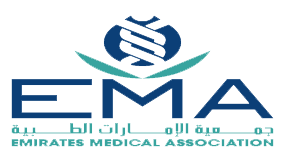Tummy tuck surgery can lead to hernia risk; however, with expert care, risks are minimised. Essential for informed surgical decisions.
Can Tummy Tuck Cause Hernia
A tummy tuck , also known as abdominoplasty, is a popular cosmetic surgery procedure to flatten and tone the abdomen. During a tummy tuck, excess skin and fat are removed and the abdominal muscles are tightened.
While a tummy tuck can dramatically improve the appearance of the midsection, some patients wonder – can a tummy tuck cause a hernia? Here we’ll explore the relationship between tummy tucks and hernias.
What is a Hernia?
First, let’s review what exactly a hernia is. A hernia occurs when an organ or tissue squeezes through a weak spot or a hole in the surrounding muscle or connective tissue. Hernias often form in the abdominal wall, upper thigh, or groin area.
Some of the most common types of hernias include:
Book A Consultation With Dr Shehzadi Tasneem
Top-rated Plastic Surgeon For Tummy Tuck in Dubai
Installment Plan Available
- Inguinal hernia – forms in the inner groin
- Umbilical hernia – forms near the belly button
- Incisional hernia – forms through an incision or weakened tissue after surgery
Hernias can cause pain, discomfort, and other potentially serious complications if not treated.
Can a Tummy Tuck Cause a Hernia?
During a tummy tuck, the abdominal muscles are tightened by sewing them closer together. This helps to flatten the stomach and narrow the waistline.
However, experts say it is unlikely that a tummy tuck itself would cause a hernia. That said, there are some factors that may increase a patient’s risk:
1. Pre-Existing Hernias
If a patient already has a small, undiagnosed hernia prior to abdominoplasty, the procedure could potentially aggravate it. For this reason, surgeons carefully examine patients for any pre-existing hernias before surgery.
2. Improper Surgical Technique
In very rare cases, the sutures used to tighten abdominal muscles during a tummy tuck could tear through tissue if tied too tightly. This may weaken the area and increase chance of herniation. Proper surgical technique is extremely important.
3. Post-Op Complications
While uncommon, some patients may develop post-operative complications like an infection, hematoma (blood collection), or seroma (fluid collection). These could conceivably weaken the abdominal wall and raise hernia risk.
4. Heavy Lifting Too Soon After Surgery
Patients must avoid strenuous activity and heavy lifting for 6-8 weeks after abdominoplasty to allow complete healing. Doing so too soon could potentially stress tissues and cause herniation.
Surgical Techniques to Prevent Herniation 
Reputable plastic surgeons use meticulous surgical skills and various preventative techniques to minimize any risk of herniation during tummy tuck surgery. Here are a few:
- Careful examination for pre-existing hernias
- Use of progressive tension sutures to evenly distribute tension when tightening abdominal muscles
- Adding surgical mesh for extra reinforcement of repaired muscles
- Detailed post-op instructions to prevent patients from lifting too much, too soon
Signs of a Hernia After Tummy Tuck Surgery
While rare, it’s important for tummy tuck patients to monitor their incisions for any signs of a possible hernia following surgery. These include:
- A visible bulge under the skin near the abdomen or groin
- Pain, pressure, or discomfort, especially when bending over or lifting
- Weakness or burning sensation around the bulge
Any suspicious symptoms should be evaluated by the surgeon right away to check for a hernia. Early repair greatly reduces risk of complications.
Hernia Repair Procedures After a Tummy Tuck
If a hernia is identified after a patient has healed from abdominoplasty, the general treatment approach is as follows:
- Watchful Waiting – no treatment for an asymptomatic hernia that isn’t changing or causing problems.
- Trusses or Hernia Belts – external devices worn over the hernia to keep it pushed in.
- Hernia Repair Surgery – surgery to push the tissue back into place and strengthen weakened muscle tissue.
The specific technique used to repair a post-tummy tuck hernia depends on its exact location and cause. But rest assured, an experienced surgeon can safely correct it.
Results After Hernia Repair and Tummy Tuck
While the need for additional surgery can be discouraging, patients can take comfort knowing that with proper diagnosis and treatment, outcomes after hernia repair post-tummy tuck can still be very positive.
| Result | Description |
| Improved abdominal contour | The original tummy tuck results are mostly preserved, with a smoother, flatter abdominal profile. |
| Minimal additional scarring | Any scars from the hernia repair are incorporated into the existing hip-to-hip tummy tuck incision site. |
| Preserved belly button position | The navel position should remain unaffected by the hernia repair. |
| Long-lasting results | Following post-op guidelines after both procedures allows results to stand the test of time. |
| Intact core muscle function | Repairing a hernia restores strength to abdominal muscles weakened by herniation. |
| Restored confidence | Despite needing an additional procedure, most patients enjoy their original goals of looking and feeling better. |
The table summarizes what patients can generally expect in terms of aesthetic outcomes and abdominal muscle function after undergoing a subsequent hernia repair procedure post-tummy tuck. With proper surgical care, results can still be very favorable.
Maintaining Long-Term Results 
While an expertly performed tummy tuck should not directly cause a hernia, maintaining a healthy lifestyle can help minimize risks longer term. Here are some tips:
- Maintain a healthy body weight
- Avoid smoking
- Follow post-op guidelines
- Build core muscles with regular exercise
- Avoid constipation and straining
- Lift properly and use support belts if needed
Conclusion
While hernias after a tummy tuck are very uncommon, they remain a small possibility. Selecting a skilled, board-certified plastic surgeon, adhering to post-op instructions, and leading a healthy lifestyle can all help you achieve gorgeous, long-lasting results from your procedure.
Dr. Shehzadi Tasneem Sultan is a leading board-certified plastic surgeon in Dubai with over 15 years of experience expertly performing cosmetic surgeries like tummy tucks. Book a consultation with her today to discuss your goals and develop a customized treatment plan to safely achieve the flat, toned midsection you’ve always desired. Dr. Sultan utilizes meticulous technique and preventative measures to produce beautiful outcomes designed to boost your confidence. Contact her office now to schedule your appointment!
Tummy tuck swelling alleviates slowly, which means it takes time for the puffiness to go away. Be patient and follow any advice from your doctor. Swelling usually starts to decrease about 2 to 3 weeks after a tummy tuck, but it can take a few months to go away completely. When does swelling decrease post-tummy tuck? It varies, but most people see a big improvement after the first few weeks. Tummy tuck local sedation means you stay awake but don’t feel pain during the surgery to remove extra belly skin and fat
Tummy tuck operation removes extra skin and fat from the belly Tummy tuck recovery aches can be uncomfortable but usually get better over time Most people feel sore and achy for a few weeks after their
Abdominoplasty risks evaluated Doctors check for possible problems before tummy tuck surgery to keep patients safe and healthy during and after the procedure Delayed tummy tuck issues can happen when people wait too long after weight loss or pregnancy to get a tummy tuck
Uneven tummy contour happens when your belly has bumps or dips instead of being smooth Some people have
Frequently Asked Questions About Tummy Tucks and Hernias
Here are answers to some common questions about the relationship between tummy tuck procedure s and hernias:
Can a tummy tuck cause an umbilical hernia around my belly button?
It’s very unlikely. Experienced surgeons take care to preserve blood flow to the navel during tummy tuck surgery to prevent issues like umbilical herniation from occurring.
How long after a tummy tuck would a hernia appear?
Most cases of post-abdominoplasty herniation are diagnosed within the first year after surgery if they occur. That’s why following post-op guidelines is so important for proper healing.
Can a tummy tuck get rid of a pre-existing hernia?
No, a tummy tuck cannot repair a hernia. But, it can often help minimize the visible appearance of one located on the lower abdomen. A separate hernia procedure by a general surgeon may still be required at a later date however.
What is the usual recovery time after hernia surgery following tummy tuck?
Recovery typically takes around 4-6 weeks. Patients will need to avoid straining, wear a special binder, and follow other wound care instructions during this period until tissues have adequately healed.
How much does hernia repair surgery cost after a tummy tuck?
Costs can range widely based on extent of the hernia, surgical technique utilized, and other factors. On average, fees in the UAE are often 7,000 – 20,000 AED out of pocket. Discuss budgets and medical insurance coverage with your surgeon.
Claude 2












